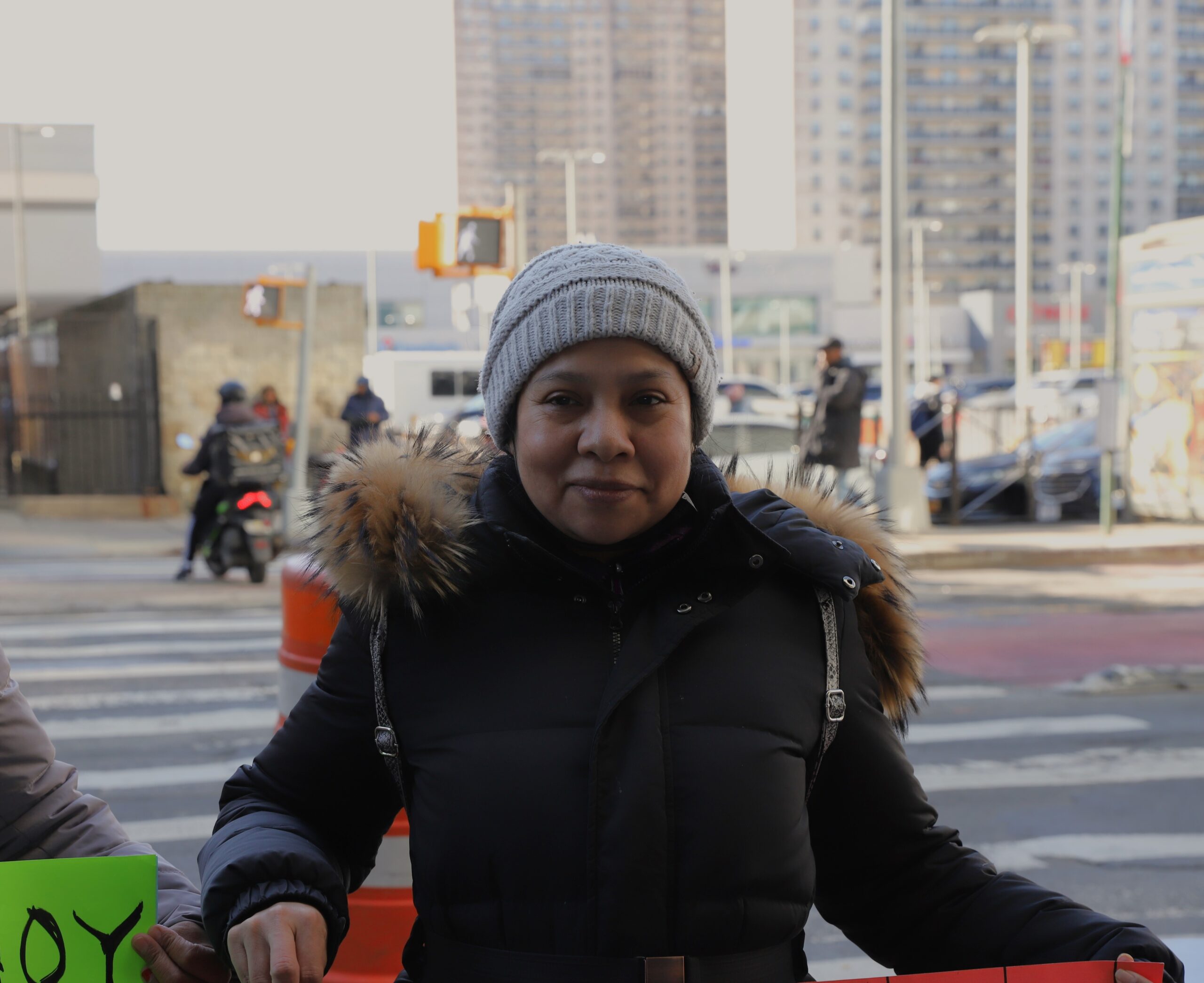After a long day of biking around the South Bronx as a deliverista, Maria Varela has learned to turn on her live location so her partner and other colleagues can track her on her way home.
As challenging as her day can be in the daytime, it feels even less safe at night, said Varela, 40, who came to live and work in here from Mexico.
“You cannot even walk alone, safe, in this area, but we have no other choice,” said Varela. “I always leave my house with fear.”
Varela is one of several women who make a living as a delivery worker who carries app-based food orders to customers around the borough, usually on a regular bike or an electric bike. The job can be grueling, with high-demand but mediocre pay, and at times, it feels dangerous – especially for the women, Varela said.
Roughly 75% of New York City deliveristas are men, compared to about 24% female, according to a 2022 report on delivery workers from the city’s Department of Consumer and Worker Protection. The report surveyed roughly 120,000 delivery workers in late 2021, and found the average wage then, with tips, to be just over $14 an hour.
In 2023, Mayor Eric Adams announced a new pay rate for app-based restaurant delivery workers that put their average hourly earnings at $19.56. Prior to that, deliveristas on average earned barely more than $7 an hour, according to the city. The minimum pay will rise to $19.56 an hour by April 2025, the city said.
The higher earnings may help deliveristas make ends meet, but the job also has a high injury rate, the city found. Aside from the hazards of traffic and weather, delivery workers have to deal with customers, long periods of waiting on streets, and the fear of attacks, according to the city report, and interviews with deliveristas.
For women, those safety risks are often magnified.
Varela and her friend Gloria Lechuga, 40 and also from Mexico, began making app-based deliveries during the pandemic. They were among those who lost their regular jobs when businesses began to close indefinitely during the lockdown.
The two women needed to keep working, however, to cover household expenses. With the sudden demand for delivery workers, thanks to the spurt in app-based food services, they became deliveristas.
As far as Lechuga and Varela know, they are the only two women delivery workers in their area of the South Bronx. They both know Ernesta Galvez, who now lives in New Jersey but was among the organizers who led the push for App Delivery Worker Rights bills in the city.
Varela said she’s grateful to other delivery workers who keep an eye on the women when they’re out working. She especially gets nervous crossing the Willis Avenue Bridge in Mott Haven, an area that’s reported to be high-risk for deliveristas. Some have said they were followed and harassed, and others have said they were victims of violence.
Lechuga, who has been a delivery worker for three years, said the job is a slog, even with the recent pay increase and another on the horizon.
Aside from the fact the work can be grueling in harsh or extreme weather, women face added challenges, like finding safe places to go to the bathroom during their shifts, which are often 10 to 12 hours, when they work full time. It can become particularly cumbersome during menstruation, the women said. They may not spend all those hours doing deliveries, but they’ll be waiting for orders, chained to their apps, the women said.
The city passed laws in 2022 that said app-based delivery workers must have bathroom access at restaurants that rely on their services. But there are loopholes. Workers can be denied access if there’s a health or safety risk, such as a worker having to cross the kitchen to get to the bathroom. In addition, restaurants that signed delivery contracts with mobile apps before Jan. 24, 2022 are exempt from the law.
“It is difficult, as a woman, to be all day on your period with limited access to a restroom. Accidents happen all the time,” said Lechuga.
The women can also show the wear and tear of the job when they show up at places to pick up deliveries, she said.
“We are outside all day,” she said. Sometimes “the customers, managers and cashiers, they look at us with contempt, or they ignore us.”
There are times when the women struggle to carry heavy orders to apartments that are up several flights of stairs, or when their electric bikes have an issue and need to be moved manually. They’re often too heavy for the women to shift alone, forcing them to ask for help.
However, there is at least one advantage to being a woman deliverista, said Varela. Some clients tend to tip them better.
“It’s like they trust us more,” Varela said.
Some clients have the opposite reaction.
Varela’s dropped off food to men who come to the door wearing very little clothing. Lechuga said a client once spat on her when she was late with his delivery.
“I did not want to get into the building where I did not feel safe, and he took away all of the tip,” she said.
Women deliveristas who experience harassment on the job don’t always feel comfortable reporting the incidents, said Lechuga.
Lechuga, who lived and worked in the South Bronx for two years, now lives in Yonkers, where she feels it is safer to be a deliverista and safer for her family.
“At the end of the day we shower, and take off the deliverista uniform, and we have a life like any other person,” she said.

